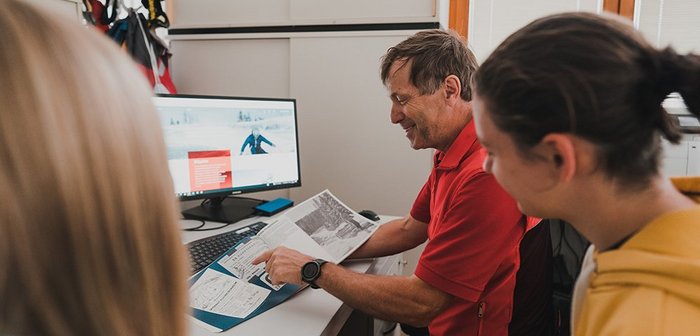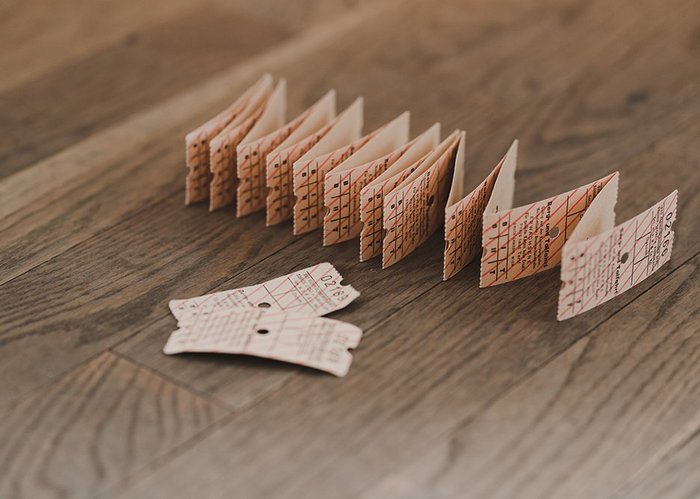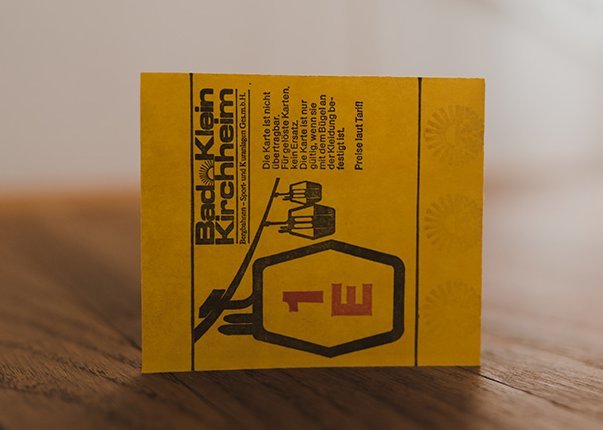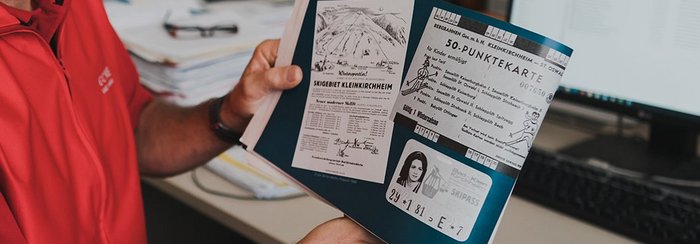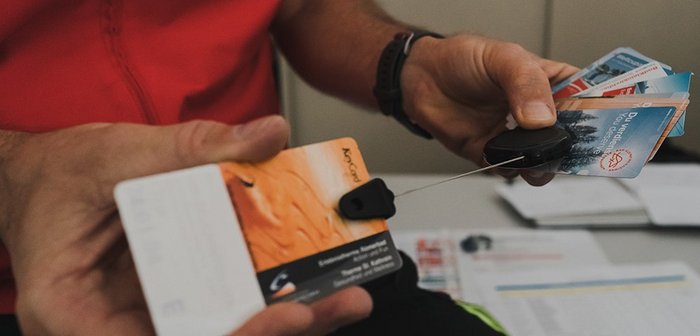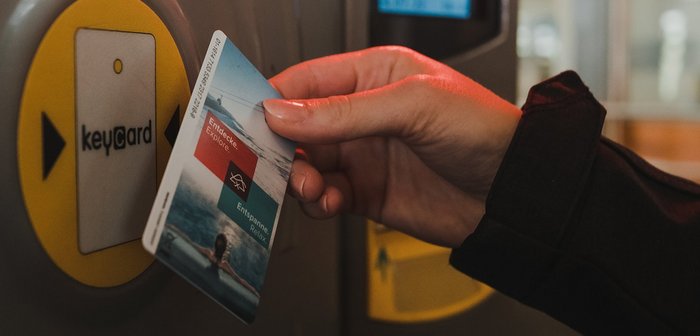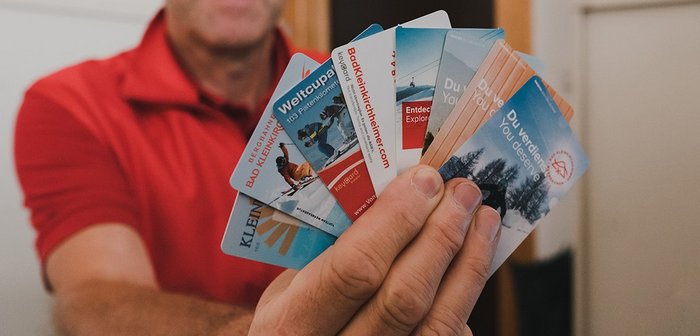"Ticket please!"– our operations manager Gerd Schabus remembers hearing this at every lift station all too well. Because that meant wriggling out of your glove, rummaging around for the crumpled up paper ticket and getting a hole punched in it. As the longest-standing member of the company, Gerd has largely experienced the evolution of the ski pass at the Bad Kleinkirchheimer Bergbahnen first-hand. He searched his memory archives for us to take you on a journey through time, looking back on 65 years of ski pass history. Ready?
Ski passes back in the day.
The history of the ski pass began as early as 1956: simple paper tickets from a roll, each valid for one ascent and one descent, were first sold in the lift queues, later in small ticket booths next to the valley stations. This was soon followed by points cards. These were punched with a pair of punch pliers and thus validated every time the lift was entered. In order to track the access data for the lifts, these pliers were equipped with a mechanical counting wheel, which was read at the end of the day.
Going elastic.
At the beginning of the 80s, Gerd recalls the Bad Kleinkirchheimer Bergbahnen also using yellow adhesive passes. The day passes were date-stamped, affixed to a frame and attached to the skiing jacket. A few years later, tickets with magnetic strips or barcodes replaced these cards. These paper passes were proudly worn around the neck with a simple elastic band, and later attached to the skiing jacket with a ‘ski zip’. Do you still remember ‘ski zips’? The little plastic holder with an extendable elastic band to which the lift pass was attached. Have a look – you might even have one still lying around at home.
Technological advancement.
The revolution soon followed: the company SKIDATA was the first to develop an electronic chip card for ski resorts. Using special registers with an electromagnetic stamping device, ski passes could be individually printed and electronically assigned to different tariffs for the first time (such as day or multi-day passes, children's, adolescent or adult passes). This was a major step forward, but the passes still had to be held up to the reader by hand to access the lifts in the Carinthian ski resorts.
So long, paper ticket.
Gerd is not the only one who can confirm that constantly retrieving the card was a nuisance and that the ski zip whipped your nose painfully during rapid descents. An alternative was needed. So in the mid-90s, the original paper tickets gradually evolved into reusable RFID cards made of plastic. The so-called ‘key card’, as is still used today, was born.
An improvement with a clear advantage.
With the modern key card in your pocket, you glide smoothly past the terminal towards the lift. Contactless, simple, straightforward. Gerd agrees that the development of the key card has undoubtedly brought a number of advantages with it:
- Convenient and fast access: the contactless access system at the turnstile automatically recognises whether your pass is valid or not.
- Increased security and protection against ticket fraud or forgery.
- Sustainability thanks to reusable cards: Skidata key cards from almost all ski resorts in Austria can be recharged at the Bad Kleinkirchheimer Bergbahnen. This is beneficial for the environment and your wallet, as the money you save on tickets is much better spent at the skihut.
- Recharge without queuing: you can easily recharge your Skidata key card from your last winter holiday online – without having to stand in line at the ticket office. So you can start your next family outing in Carinthia stress-free and relaxed!
The access system of tomorrow.
The ski pass has undergone an exciting journey over the past few decades, hasn't it? And in view of the constant technological development, this journey is far from over. Because since 2020, the company Skidata has been testing an electronic pass that will replace the physical card: once you have bought and activated the pass online, the access information is sent to the turnstiles via Bluetooth and you’re good to go. What do you think: How long will we have to wait for the ski pass of the future?
Important: Whether paper or plastic, stamped, punched or beeped, for one day or the entire season: please note that your pass is personal and therefore non-transferable! Our staff at the turnstiles check this regularly.

